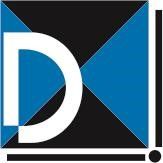Pumps Market Procurement Report – Pricing Analysis, Trends, and Forecast by SpendEdge
Global procurement intelligence advisory firm, SpendEdge, has announced the release of their ‘Pumps Market Procurement Research Report.' The insights and data in this report provide a strategic analysis of the supply markets, factors influencing purchasing decisions, procurement best practices, pricing models, supplier landscape, and an analysis of the supplier capability matrix for the facilities management industry. This report breaks down the data and analysis behind the procurement pumps and acts as an all-inclusive guide for making smart purchasing decisions.
This press release features multimedia. View the full release here: http://www.businesswire.com/news/home/20171026005817/en/

Global Pumps Procurement Market Intelligence Report (Graphic: Business Wire)
“The growth of the global pumps market can be attributed to the growth of various end-user industries such as construction, oil and gas, water and wastewater management, and energy,” says SpendEdge procurement research analyst Tridib Bora. “Also the rise in new infrastructural activities in developing countries such as India and China is leading to the growth of the construction industry in APAC,” added Tridib.
Key Report Features
| Supply Market Insights | Negotiation Strategies | |
| Procurement Best Practices | Category Risk Analysis | |
| Cost Saving Opportunities | Key Supplier Analysis | |
| Pricing Models | Supplier Capability Matrix | |
Looking for more insights from this report? Request a free sample report
SpendEdge sample reports are free of charge and provide insights that focus on cost-saving aspects of procurement and optimization of category spend.
Report Insights
- The growth of this market can be attributed to the increasing number of nuclear power plants across geographies. The growth of these plants is a major driver for the global pumps market as pumps are of various sizes, types and capacities are required for the smooth functioning of such facilities.
- Procurement managers should engage with manufacturers with well-defined distribution channels. Buyers who engage with suppliers that have a dedicated warehouse facility, as well as own distribution channels will reduce the risk of disruptions in delivery timelines of the product. It also helps to cater to just-in-time demands of buyers, which can help them reduce their inventories.
- The major challenge in this industry is the high logistics costs. Many suppliers in the pumps market do not have their distribution channels or vertically integrated supply chain. These suppliers outsource their logistics to third-party providers, which may lead to failure in adherence to delivery timelines. Hence the buyers need to identify suppliers who offer best services with lower operational costs.
This report is available at a discount for a limited time only: View the report snapshot before purchasing
Pumps Market Pricing Trends
Competitive pricing is the most preferred pricing model among buyers in the global pumps market as it provides better negotiating power and transparency in pricing. Cost based pricing model and fixed pricing model are the other pricing models that find comparable adoption. The cost-based pricing model offers transparency in pricing, as prices are set based on the manufacturing costs incurred for specified products whereas the fixed pricing model helps buyers by reducing risks pertaining to increased manufacturing costs and market fluctuations.
We also customize reports to meet clients’ requirements.
Browse Related Reports:
- Global Solid Waste Management Category - Procurement Market Intelligence Report
- Global Air Quality Monitoring Category - Procurement Market Intelligence Report
- Global Pest Control Services Category - Procurement Market Intelligence Report
- Global Janitorial Equipment and Supplies Category - Procurement Market Intelligence Report
About SpendEdge
SpendEdge shares your passion for driving sourcing and procurement excellence. We are a preferred procurement intelligence partner for Fortune 500 firms and other leading companies across numerous industries. Our strength lies in delivering robust, real-time procurement market intelligence that helps sourcing and procurement professionals make informed decisions. These innovative procurement solutions help enterprises transform structural capabilities, improve execution efficiency, and fast-track time to savings.
View source version on businesswire.com: http://www.businesswire.com/news/home/20171026005817/en/




